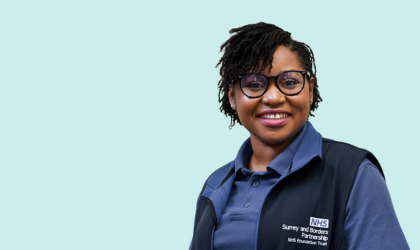Crispina's Story
Meet Crispina, based at St Peter’s Hospital, who works to ensure people with learning disabilities receive safe, compassionate and accessible care.
“My goal is to improve the hospital experience for people with a learning disability – and to support staff in making small changes that make a big difference.”
What's your role?
I’m the Senior Acute Learning Disability Liaison Nurse at St Peter’s Hospital, supporting adults with a learning disability throughout their hospital journey.
My role is all about making sure people get the care they need in a way that works for them. That might mean arranging for someone to be seen in a quieter space, booking a longer appointment, or advising staff on how to use less invasive procedures where possible.
I work across inpatient wards, A&E, maternity and outpatient departments. In A&E, I can fast-track people with a learning disability when it’s appropriate, helping them get seen or admitted more quickly based on their needs.
Collaboration is central to what I do. I work closely with staff across Surrey and North East Hampshire, offering tailored advice and helping to share best practice.
Describe a typical day
My day starts by checking the hospital’s patient list to identify any planned admissions for people with a learning disability. I also review emails and referrals from hospital staff to see who may need support, especially those who’ve been admitted unexpectedly.
I visit the wards and outpatient areas to offer advice and help wherever it’s needed. Because I work 8am to 4pm, a big part of my role is making sure staff are confident to support people even when I’m not there.
We’ve also trained over 80 Learning Disability Champions at St Peter’s Hospital. Each year in April, they complete a dedicated training day and receive a certificate to support ongoing confidence and learning.
What’s the best part of your job?
Achieving good outcomes for people who might otherwise struggle in hospital.
One example I’m really proud of is supporting a young man who needed an endoscopy and colonoscopy. He had a history of fear and distress in clinical settings, and his behaviour could become aggressive as a result. I started planning months in advance, arranging for his GP to give sedation at home, then having the anaesthetist meet him in the hospital car park for a second dose.
We arranged a quiet double room with minimal furnishings to keep him safe. Because of all this preparation, not only did he complete the procedures successfully, he also agreed to have a blood test for the first time in seven years. That felt like a huge win.
 Meet our people
Meet our people

